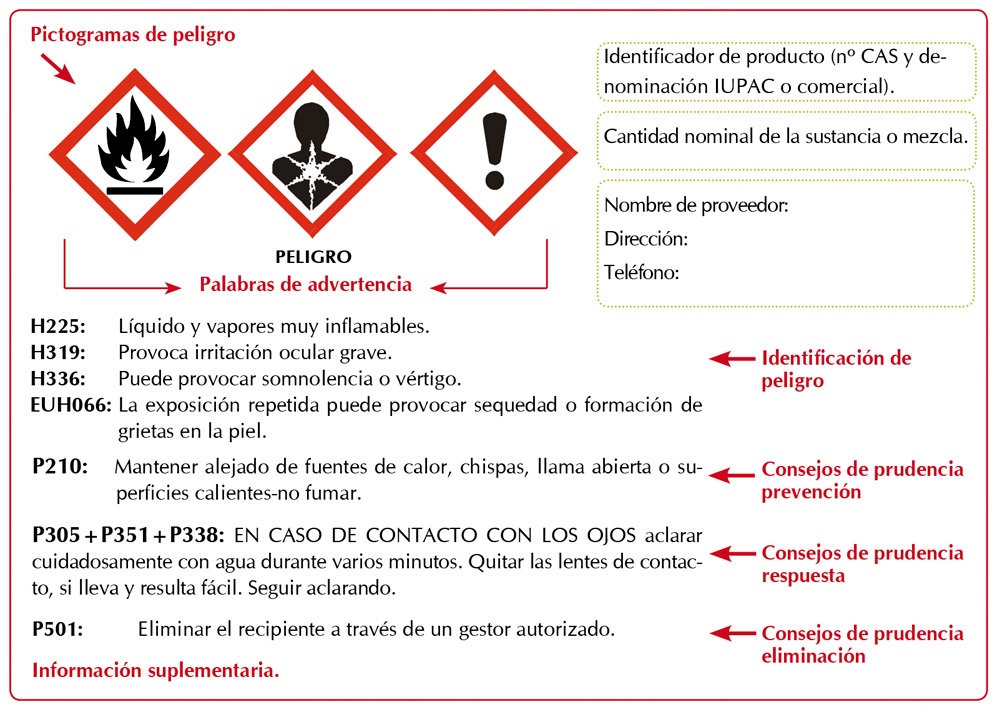Labeling of chemicals is a fundamental aspect of safe handling, storage and transport of hazardous substances. Ensuring that each chemical is correctly labeled is more than just a regulatory requirement, it is also a safety measure that protects both workers and the environment.
That's why today we at United Barcode Systems, manufacturers of labeling, coding and marking equipment with over 30 years' experience in the industry, bring you this comprehensive guide exploring the key aspects of chemical labeling and coding, from regulatory requirements to technological solutions that facilitate accurate and reliable labeling.
Importance of proper labelling of chemicals
Proper labelling of chemicals is essential to ensure safety at all stages of the supply chain. Clear and accurate labeling identifies the hazards associated with each substance, protecting chemical handlers and preventing incidents that may affect the environment. It also facilitates compliance with safety regulations and helps companies to manage their products responsibly and efficiently.
Labeling objectives in chemical safety
As mentioned above, the main purpose of chemical labelling is to provide information on the hazards that these substances may present, enabling users to handle the products safely. Labeling must include information on hazard classification and instructions for use, as well as protective measures to minimise risks. This information enables companies to ensure a safe environment for workers and to reduce the environmental impact of their operations.
Another key objective of labelling is to ensure the traceability of each product. This means that, in the event of an incident or product recall, its origin and distribution can be quickly traced. Proper labelling ensures that each product is clearly identified, which is critical in emergency situations.
Requirements for the labeling of hazardous chemicals
Classification of hazardous chemicals
Chemicals must be classified according to the hazards they present, such as toxicity, flammability, corrosion or damage to the environment. This classification allows appropriate pictograms and warnings to be assigned on labels, facilitating visual recognition of the hazards. The classification is the basis for defining what information should be included on each label.
Essential elements in labeling
Hazardous chemical labels should include several key elements, such as the name of the substance, hazard pictograms, warning phrases and safety precautions. These elements ensure that anyone handling the product has a clear understanding of the hazards and the precautions to be taken.
Current regulations on labelling of chemical products
Main regulations and standards
Globally, the labelling of chemical products is regulated by the Globally Harmonised System (GHS), which standardises the criteria for the classification and labelling of hazardous substances. In the European Union, the CLP (Classification, Labeling and Packaging) regulation requires compliance with specific standards for chemical safety. These regulations ensure that information on chemicals is consistent and accessible worldwide.
GS1 regulations also establish guidelines for the coding of chemicals using barcodes and identification labels, facilitating traceability and compliance in logistics systems. This is particularly important for products that require strict control of their location and handling.
Recent changes in labeling regulations
In recent years, labeling regulations have evolved to include more specific criteria on legibility, font size and design of hazard pictograms. These changes respond to the need to improve the comprehensibility of labeling and facilitate access to information in industrial environments. Companies need to be aware of these changes to ensure that their products comply with current regulations.
Labelling structure: Pictograms and warning signs
Interpretation of hazard pictograms
Hazard pictograms are graphic symbols indicating the specific hazards associated with a chemical. These pictograms are designed to be visible and easily recognisable, allowing workers to quickly identify the hazards present. Each pictogram represents a type of hazard, such as flammability, toxicity or corrosion, and their presence on the label is mandatory for certain products.
Information to be included on the label
A chemical label must include, in addition to pictograms, detailed information on composition, manufacturer, warning phrases (H and P phrases) and precautionary measures. This information is essential to ensure safe use of the product and to prevent accidents. It must also be in the language of the country where the product will be distributed to ensure correct understanding. The label must be durable and legible at all times.

Danger pictogram
Consequences of incorrect labeling
Risks associated with poor labeling
Incorrect labeling of chemicals can result in serious safety hazards. If label information is incomplete or confusing, workers may handle the product improperly, increasing the risk of accidents. Poor labeling can also lead to regulatory sanctions and damage to a company's reputation.
Impact on health and the environment
When chemicals are not correctly labelled, there is an increased risk of exposure to hazardous substances, which can seriously affect the health of workers and the environment. Accurate labelling ensures that users take the necessary precautions, reducing environmental impact and protecting public health.
Labeling systems for chemicals
Drums and kegs
Labeling drums and barrels, whether metal or plastic, is a challenge in harsh industrial environments. At United Barcode Systems we offer a reliable solution such as the APL 35s Drums, which, as mentioned above, allows the application of labels on cylindrical surfaces without the need to rotate or manipulate the drum or barrel. This technology ensures that the labelling remains stable, even in conditions of high humidity, dust or extreme temperatures.
In situations where the drum or keg is moving on a belt and cannot be stopped, the APL 35s Corner wrap electric is the best choice. This equipment allows the application of labels up to 200 mm in length, adapting to the curvature of the drum without affecting the speed of the production line.

Barrel labeling
Plastic containers
The coding and marking of plastic containers has evolved significantly from traditional solvent ink to more advanced and sustainable technologies such as laser marking and UVLED curing. Although coding on plastics remains a challenge due to the variety of surface finishes and types, the TJX UVLED allows for sharp printing and instant curing on these containers. This technology is ideal for applications requiring low maintenance and reduced reliance on consumables, which also reduces environmental impact.
In addition, for the wide variety of plastic container formats, APL Series automatic label printing and application equipment offers a variety of configurations to suit different sizes and shapes.
Porous corrugated cardboard boxes
Corrugated board is one of the most widely used packaging materials in global industry, supporting logistical information from production to final consumption. Today, direct to carton printing and real-time self-adhesive label application have replaced traditional flexographic printing, offering advantages such as reduced carton inventories, greater flexibility in changing line formats and significant cost savings.
UBS APLINK Series high-resolution inkjet printers and APL Series print & apply equipment are ideal for the job. With our equipment, you are guaranteed a high quality, durable print, suitable for porous surfaces, that withstands transport and storage conditions, facilitating traceability and inventory management throughout the logistics chain.
To ensure accurate labeling and meet chemical safety requirements, United Barcode Systems offers innovative solutions tailored to each customer's needs. Contact us today to find the ideal solution that will ensure the safety and compliance of your chemical products. We are here to help.

